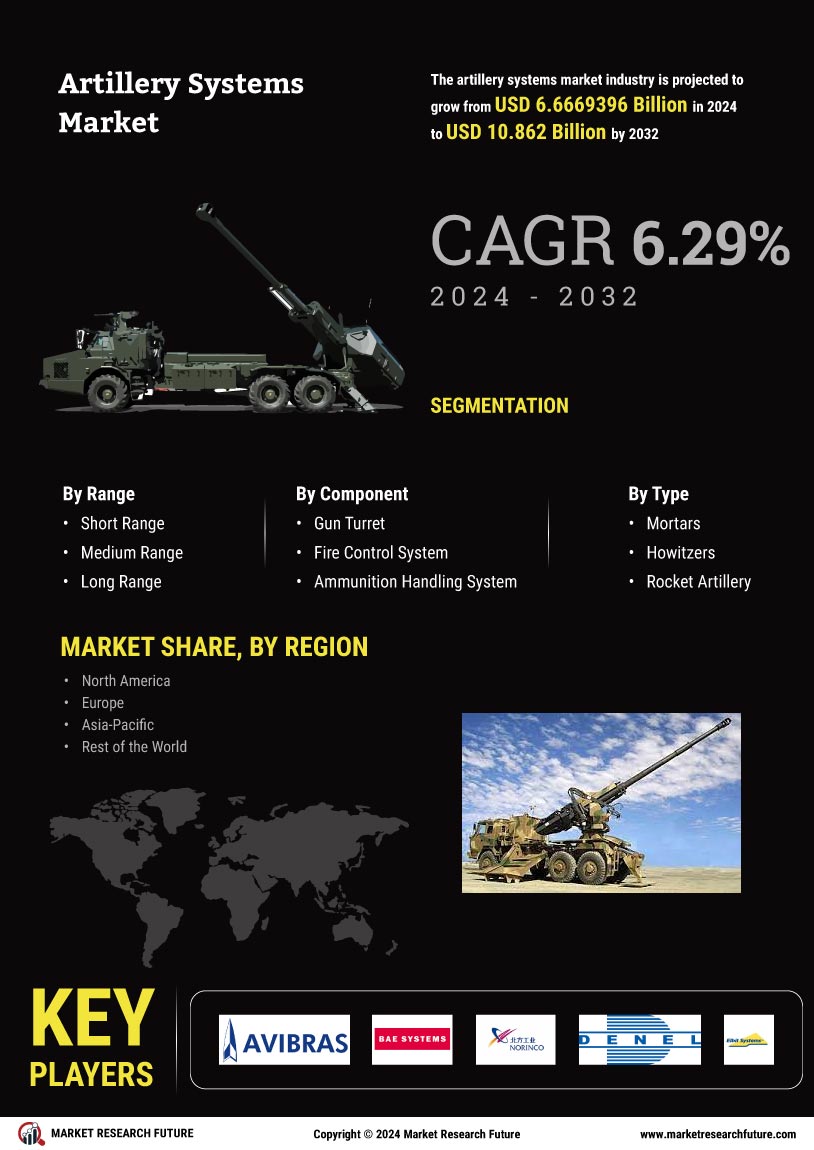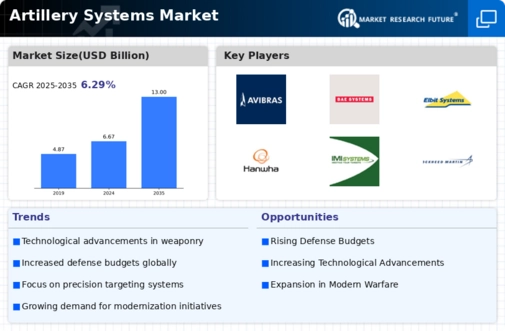Artillery Systems Market Summary
As per Market Research Future Analysis, the Artillery Systems Market was valued at USD 6.67 Billion in 2024 and is projected to grow to USD 13.04 Billion by 2035, with a CAGR of 6.29% from 2025 to 2035. The growth is driven by increased military spending and modernization programs across various countries, particularly in response to geopolitical tensions. The market is characterized by a strong demand for advanced artillery systems, including long-range capabilities, which are essential for modern warfare.
Key Market Trends & Highlights
Key trends influencing the artillery systems market include increased defense expenditure and modernization efforts.
- Military spending increased by 2.6% in real terms from 2019 to USD 1981 Billion in 2020.
- The short-range artillery segment dominated the market, with a range of 5-30 km.
- The fire control system component generated the most income due to demand for rapid-fire weapon assemblies.
- North America is expected to dominate the market, driven by the U.S. military's advanced defense equipment.
Market Size & Forecast
| 2024 Market Size | USD 6.67 Billion |
| 2035 Market Size | USD 13.04 Billion |
| CAGR (2025-2035) | 6.29% |
Major Players
Key companies include Avibras (Brazil), BAE Systems (UK), China North Industries Corporation (Norinco) (China), Denel SOC Ltd (South Africa), Elbit Systems (Israel), General Dynamics (US), Hanwha Group (South Korea), IMI Systems (Israel), Kmw+Nexter Defense Systems (Netherlands), and Lockheed Martin (US).


















Leave a Comment